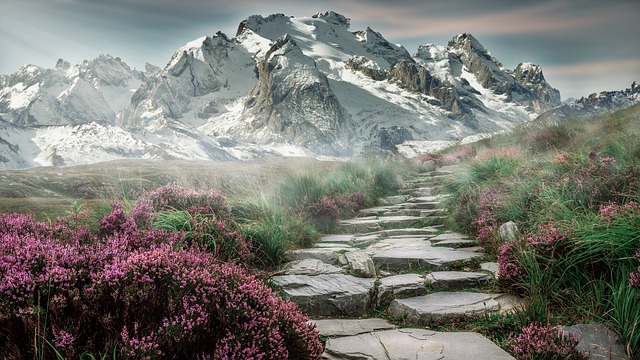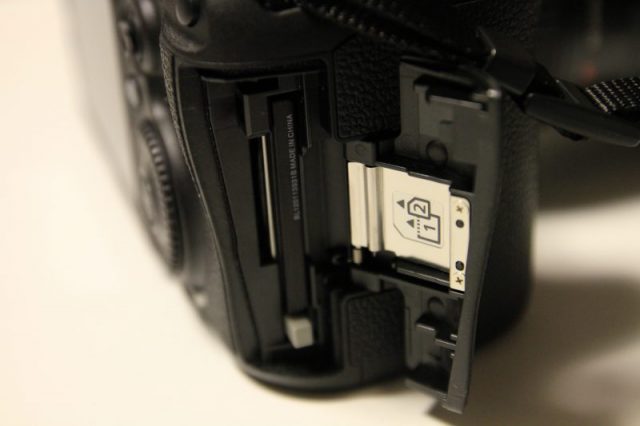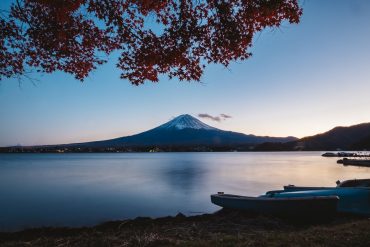Camera gear is fragile and expensive equipment, and they are designed to operate when they are free of debris, moisture, and impact. Any dedicated photographer must provide a good storage solution to help keep camera gear safe and sound between uses.
In the following tutorial, I will discuss the best ways to store your camera gear when not in use. There are two storage conditions: the first is storing in moderate temperatures and humidity, and the second is when you have to store your camera gear in rather hot and humid weather.
-
Storing Camera gear in moderate temperature
In moderate weather conditions, we don’t need to control the temperature, but we rather concentrate on keeping the humidity at low levels. So, a proper bag should be used. A proper bag has at least 1/4″ padding on the outside and separation for all lenses. The outside should have rigid panels to prevent flexing and distribute the force from bumps. I wrote a couple of posts for choosing the best bags you might check them out here. For example, the following bag is a good choice.
Neewer Flexible Partition Camera Padded Bag
Product highlights
- Insert bag separates your camera body and lenses with other belongings in your handbag or travel case
- It protects your photo gears against scratches and collisions
- Fits GoPro camera systems, professional shoe-mount flash units, radio triggers, mirrorless cameras and lenses, Battery and Charger, cables, and other accessories
- The fastening taped cushions inside the bag are removable and adjustable. It could be constructed into 7 small partitions, each of which could house a content safely
Use a desiccant material such as silica gel packets in your bag or equipment case to absorb excessive moisture and protect your camera gear. Silica gel packets can be purchased in quantity from professional camera dealers and chemical supply houses, and are available in clear or moisture-indicating varieties.
10 Gram 30 Packs of Silica Gel Packets
Product highlights
Silica gel can absorb 40% of its weight in water vapor and 15% in the first two hours. No change in size or shape even the silica beads become saturated, feels, and look dry, keep everything dry and safe. In very humid conditions suggest using more packs to be more effective
Our silica gel desiccants contain orange indicating beads that enable users to quickly determine when the desiccant needs to be recharged or replaced, the orange crystals changing color to blackish-green when they become saturated with moisture.
Note that desiccant gradually loses its capacity to absorb moisture and should be replaced at regular intervals.
Keep your storage bag away from strong magnetic fields, do not store in the vicinity of equipment that generates strong electromagnetic radiation or magnetic fields. Static charges or the magnetic fields produced by equipment such as radio transmitters could interfere with the monitor, damage data stored on the memory card, or affect the product’s internal circuitry.
To prevent corrosion of your camera’s electrical contacts, remove battery packs before long-term storage. Also, as a matter of good housekeeping, clean cameras, and lenses regularly and thoroughly. This is especially important in hot and humid weather to prevent mildew and fungus from forming.
To prevent mold or mildew, also, take the camera out of storage at least once a month. Turn the camera on and release the shutter a few times before putting it away.
If the battery will not be used for some time, insert it in the camera and run it flat before removing it from the camera for storage. The battery should be stored in a cool location with an ambient temperature of 15 °C to 25 °C (59 °F to 77 °F; avoid hot or extremely cold locations). Charge and discharge the battery at least once every six months.
Lenses should be stored to prevent telescoping. The best way to prevent this is to store the lens face down and keep the weight of the lens to prevent telescoping. This will minimize the presence of oil in your aperture blades (which can really gum up the works when you try to change your aperture in the future). This has become less of a necessity with modern autofocus lenses that use less oil in their manufacturing, but it’s better to be safe than sorry.
Close aperture rings to the smallest f-stop to reduce tension on the springs. The springs in your lenses, like any other springs, fatigue over time. To keep your lenses like-new, set them to their smallest aperture (in other words, the highest number on your lens) when you store them. If your lens doesn’t support manual aperture adjustments, just close up the aperture using your camera body before you turn it off.
Damage to the lens element is unlikely when you have a lens cap attached.
Lenses should not be stored with hoods attached for long periods or further travel. Blunt force could damage the hood threads.
Flashes should always be stored straight and not in an angled position. Blunt force in any manner in an angled flash can damage the locking mechanism along with the electronics.
Filters should be kept in their original cases for storage and hoods can be stacked inside each other loosely.
-
Storing Camera Gear in Hot & Humid Weather
In severely humid environments, even silica gel packets may be insufficient; so-called “camera dry cabinets” are available for such conditions.
Dry cabinets come in different storage sizes (30L all the way up to 125L), and they cost between $200 to $700 dollars, in most cases, cheaper than a single lens or body. In other words, it’s an essential purchase for a serious photographer.
No matter what kind of storage container you use, ideally the humidity level should be less than 60% for maximum protection. Relatively inexpensive hygrometers of the type used for cigar thermistors are available to monitor humidity levels inside the containers. Remember to test hygrometers at least once a year, and recalibrate them if necessary.
Ruggard Electronic Dry Cabinet (50L)
Protect cameras, lenses, photographic and optical equipment, mobile electronics, and other valuables from excessive moisture, dirt, and dust with the Ruggard EDC-50L Electronic Dry Cabinet. The cabinet’s fast-acting TE Cooling Wafer regulates the interior’s relative humidity from 60 to 35% to help prevent fungus and corrosion that can damage delicate gear and other sensitive materials. Humidity adjustments take place over a 1- to 3-hour period.
Key Features
- Electronically Controlled Dehumidifier
- Reduces Relative Humidity: 60 to 35%
- Keyed Door Lock Protects Contents
- Door Seal Protects from Dust and Dirt
- 2 Adjustable Sliding Plastic Shelves
- 2 Fitted Padded Shelf Liners
- Contoured Foam Liner
- Interior LED Lighting
- Includes Multi-Voltage Power Supply
- Includes Two Keys
FORSPARK® Camera Dehumidifying Dry Cabinet
Product Features
- RAPID DEHUMIDIFICATION – dry Cabinet by FORSPARK has thermoelectric cooling technology (also referred to as semiconductor) which is quick, quiet, and heatless, and therefore protects your items from moisture, moth, mildew, rust, dust, mold, fungus, rust, oxidation, warping and etc.
- SAFE & ECONOMICAL – this camera lens storage is one of the safest dry boxes available – it has safe direct current input, therefore, there is no leakage risks and potential fire danger. Moreover, you can place this camera dry box in your bedroom or baby room without worrying about radiation. This dry box for the camera has a power-saving mode that requires only 8 watts of power.
- BUILT-IN HYGROMETER IN HIGH ACCURACY HUMIDITY CONTROL -our camera dry cabinet has a humidity sensor that offers accurate humidity control with ±5% differences (See specification to calibrate your hygrometer if needed). You can control the relative humidity level inside this camera lens storage in the range of 25% to 60%.
- EASY TO USE – this dry dehumidification cabinet box begins to work the same second the power is supplied. It has adjustable shelves for easy storage and retrieval. The LED light display can be turned ON/OFF and dark/bright which will not dazzle your eyes at night. A durable toughened glass of magnetic cabinet door is sealed tightly.
Conclusion
Spending a few hundred dollars on a dry cabinet for safe storage of your camera gear probably seems unwise; however, dry cabinets are worth it, here is why:
While camera bodies depreciate relatively rapidly, camera lenses hold value remarkably well. For instance, lenses have almost no depreciation factor. You can purchase a lens, keep it in good condition, and resell it in two years with almost no loss whatsoever.
On the other hand, a foggy front element, slugging autofocus, gummy aperture ring, or beaten-up housing can drop your value by half – or more.
Therefore, it is very logical to keep your assets safe and sound. Moreover, if you can’t afford a dry cabinet, at the very least, store your gear responsibly in a good bag and follow the tips in this tutorial, you will not regret it, and you’ll be glad you did.
Related posts
Top Rated Camera Bags – The Best 6 In 2018
The Best Camera Bags for Hiking
Thanks for reading, I hope you enjoyed the article, in case you have any questions just drop them below & I will be happy to answer you.
Photo by Element5 Digital from Pexels
If you enjoy the site, don’t forget to subscribe, we will only inform you when a new article is posted.














As a camera owner myself, this is something I never even thought about, storing the camera!
However, as your article points out, its pretty important.
I like the way you have highlighthed the different bags for the different temperatures. I am assuming that these would be alright for normal Cameras, because the one I have is not on the scale of the ones you are talking about
I have also learned something new, because I didn’t realise that Camera Lenses hold more value than the camera itself.
Overall I enjoyed the post. Thanks for taking the time to write it
Thanks for the comment, glad you liked the article.
I love the flexible partition bag. It is great to store all your camera bits and pieces. My daughter has taken a keen interest in photography so I think this will make an excellent present for her for Xmas.
I was interested to see that humidity levels make a difference and I see you also advertise a dry cabinet. What do the humidity levels have to be to pose a problem, as we live in a coastal city?
Thanks for your comment, ideally the humidity level should be less than 60% for maximum protection.